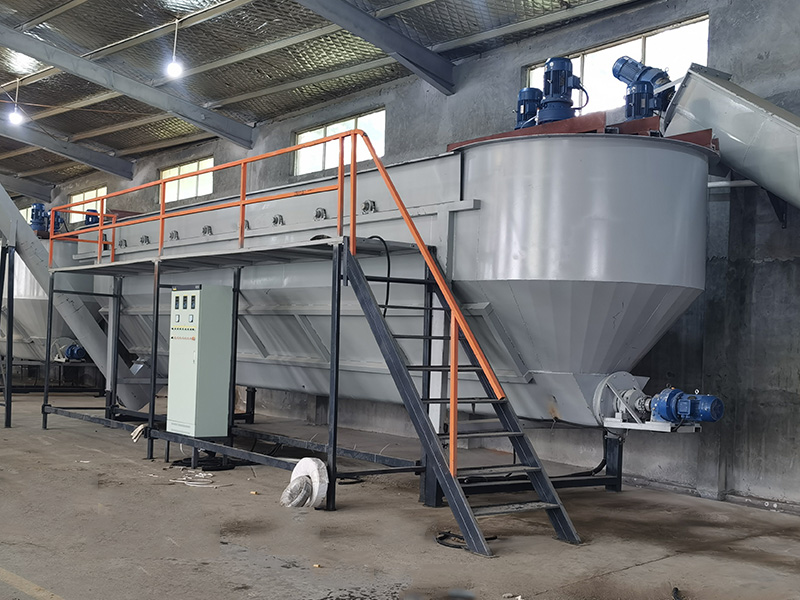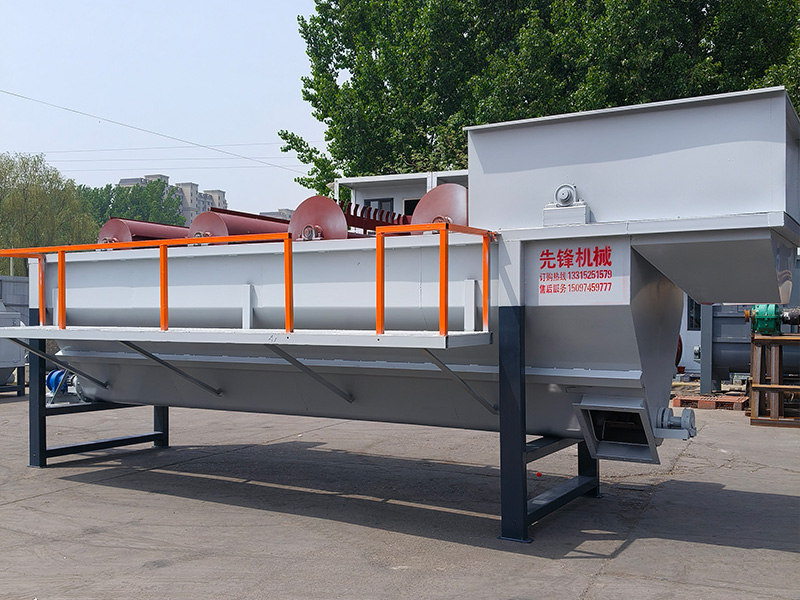Unlocking the Potential of Flotation Tanks for Sustainable Plastic Manufacturing
Unlocking the Potential of Flotation Tanks for Sustainable Plastic Manufacturing
Table of Contents
1. Introduction to Flotation Tanks in Plastic Manufacturing
2. What is Flotation Technology?
3. Mechanics of Flotation Tanks
4. Benefits of Flotation Tanks in Plastic Manufacturing
5. Environmental Impact of Flotation Tanks
6. Sustainable Practices in Plastic Manufacturing
Jun 15,2025

Unlocking the Potential of Flotation Tanks for Sustainable Plastic Manufacturing
Table of Contents
- 1. Introduction to Flotation Tanks in Plastic Manufacturing
- 2. What is Flotation Technology?
- 3. Mechanics of Flotation Tanks
- 4. Benefits of Flotation Tanks in Plastic Manufacturing
- 5. Environmental Impact of Flotation Tanks
- 6. Sustainable Practices in Plastic Manufacturing
- 7. Case Studies: Success Stories of Flotation Tank Implementation
- 8. The Future of Flotation Technology in Plastic Manufacturing
- 9. Conclusion
- 10. FAQs
1. Introduction to Flotation Tanks in Plastic Manufacturing
In the evolving landscape of plastic manufacturing, businesses are continuously seeking innovative solutions to enhance efficiency and sustainability. One promising technology is the flotation tank, a system designed to separate materials based on their density. By leveraging the principles of flotation, manufacturers can recover valuable plastics, reduce waste, and improve overall operational efficiency. This article delves into the mechanics, benefits, and future potential of flotation tanks in sustainable plastic manufacturing, aiming to provide a comprehensive understanding of this pivotal technology.
2. What is Flotation Technology?
Flotation technology refers to a separation process that utilizes the differences in the physical and chemical properties of materials. In manufacturing, particularly in plastic processing, flotation is used to separate plastic particles from contaminants and other materials. This technique is particularly beneficial for recycling efforts, where the goal is to recover high-quality materials from mixed waste streams.
2.1 The History of Flotation Technology
Flotation technology has its roots in mineral processing, where it was initially developed to separate valuable minerals from ore. Over the years, this technology has been adapted for various applications, including wastewater treatment and, more recently, plastic manufacturing. As environmental concerns grow, the adaptation of flotation technology in sustainable practices has gained significant traction.
2.2 Types of Flotation Processes
There are several types of flotation processes employed in the industry:
- **Dissolved Air Flotation (DAF)**: This process involves saturating water with air under pressure, leading to the formation of tiny bubbles that adhere to suspended solids, causing them to rise to the surface.
- **Froth Flotation**: This method uses chemical reagents to selectively attach to certain materials, allowing for their separation based on hydrophobicity.
- **Column Flotation**: A more advanced technique where a vertical column is used to enhance separation efficiency.
3. Mechanics of Flotation Tanks
Understanding the mechanics of flotation tanks is essential for appreciating their role in plastic manufacturing. These tanks consist of various components that work together to facilitate the separation process.
3.1 Key Components of Flotation Tanks
- **Aerators**: Introduce air into the tank, creating bubbles that aid in lifting materials to the surface.
- **Agitators**: Ensure uniform mixing of materials, preventing clumping and enhancing separation efficiency.
- **Overflow and Underflow Systems**: Collect separated materials, with the overflow typically containing purified plastic and the underflow containing heavier contaminants.
3.2 The Separation Process
The flotation process begins with the introduction of the material mixture into the tank. As the aerators inject air, bubbles form and attach themselves to plastic particles. The combined buoyancy causes these particles to rise to the surface, forming a froth layer that can be skimmed off. Meanwhile, heavier materials settle at the bottom of the tank, allowing for easy removal.
4. Benefits of Flotation Tanks in Plastic Manufacturing
Flotation tanks offer a range of benefits that make them an attractive option for manufacturers looking to improve their processes.
4.1 Improved Material Recovery
One of the primary advantages of flotation tanks is enhanced material recovery. By effectively separating plastics from contaminants, manufacturers can reclaim a higher percentage of usable materials, significantly reducing waste.
4.2 Cost-Effectiveness
Although the initial investment in flotation technology can be substantial, the long-term savings on waste disposal and material costs can offset this expense. Enhanced recovery rates mean that less money is spent on acquiring new raw materials.
4.3 Increased Efficiency
Flotation tanks streamline the separation process, allowing for quicker processing times. This increase in efficiency can lead to higher production rates, enabling manufacturers to meet rising demands.
4.4 Versatility in Application
Flotation tanks are versatile and can be adjusted to accommodate various types of plastics and contaminants, making them suitable for a wide range of manufacturing processes.
5. Environmental Impact of Flotation Tanks
The environmental implications of flotation technology cannot be overlooked. With growing concerns about plastic waste and pollution, the adoption of flotation tanks aligns with global sustainability goals.
5.1 Reducing Landfill Contribution
By maximizing material recovery, flotation tanks play a critical role in minimizing the amount of plastic waste sent to landfills. This reduction not only conserves space but also lessens the environmental impact associated with landfill sites.
5.2 Lowering Carbon Footprint
The efficient recovery of materials through flotation technology reduces the need for virgin plastic production, which is often energy-intensive. This transition leads to lower greenhouse gas emissions and a smaller carbon footprint for manufacturers.
5.3 Promoting Circular Economy Practices
Flotation tanks support the principles of a circular economy by facilitating the recycling of plastics, thus extending the lifecycle of materials and contributing to sustainable manufacturing practices.
6. Sustainable Practices in Plastic Manufacturing
Integrating flotation tanks into plastic manufacturing is just one of many sustainable practices that companies can adopt.
6.1 Utilizing Recycled Materials
Incorporating recycled plastics into new products not only reduces waste but also lessens the demand for virgin materials. Flotation technology enhances the quality of recycled plastics, making them more viable for reuse.
6.2 Implementing Energy-Efficient Operations
Manufacturers can further enhance sustainability by optimizing their operational processes, including energy-efficient machinery, waste heat recovery systems, and renewable energy sources.
6.3 Training and Awareness
Educating employees about sustainable practices and the importance of recycling can foster a culture of environmental responsibility within the organization, leading to more sustainable decision-making.
7. Case Studies: Success Stories of Flotation Tank Implementation
Real-world examples of flotation tank implementation illustrate their effectiveness in enhancing sustainable plastic manufacturing.
7.1 Company A: Transforming Waste into Resources
Company A implemented flotation tanks in their recycling facility, resulting in a 50% increase in recovered plastic. This transformation not only reduced waste but also generated additional revenue from selling high-quality recycled materials.
7.2 Company B: Pioneering Sustainable Practices
By integrating flotation technology into their operations, Company B reduced their reliance on virgin materials by 30%. This significant shift not only lowered costs but also positioned them as leaders in sustainability within their industry.
8. The Future of Flotation Technology in Plastic Manufacturing
As industries evolve, so too will flotation technology in plastic manufacturing. Ongoing research and development are expected to yield even more efficient systems, further enhancing sustainability.
8.1 Innovations on the Horizon
Future advancements may include the incorporation of artificial intelligence to optimize flotation processes and improve separation accuracy. Additionally, new materials and reagents could enhance the efficiency and effectiveness of flotation tanks.
8.2 Expanding Applications
The versatility of flotation technology could lead to expanded applications beyond plastics, including textiles and other materials, making it a critical component in broader sustainable manufacturing practices.
9. Conclusion
Flotation tanks represent a transformative technology in the realm of sustainable plastic manufacturing. By improving material recovery, enhancing operational efficiency, and reducing environmental impact, flotation technology is paving the way for a more sustainable future. As industries continue to adapt and innovate, the integration of flotation tanks will play a vital role in advancing sustainable practices, ultimately benefiting both manufacturers and the planet.
10. FAQs
What are flotation tanks used for in plastic manufacturing?
Flotation tanks are used to separate plastics from contaminants, improving material recovery and quality for recycling.
How do flotation tanks benefit the environment?
Flotation tanks reduce plastic waste sent to landfills, lower carbon footprints, and support circular economy practices by facilitating recycling.
Can flotation technology be applied to other materials?
Yes, flotation technology has potential applications in various industries, including textiles and mineral processing.
What is the cost of implementing flotation technology?
While the initial investment can be significant, the long-term savings in material recovery and waste management can offset these costs.
How does flotation technology enhance operational efficiency?
Flotation tanks streamline the separation process, leading to quicker processing times and increased production rates, allowing manufacturers to meet demand more effectively.
TAG:
Contact Us
E-mail :
Phone/WhatsApp:
Address:
Shunping, Baoding City, Hebei Province









